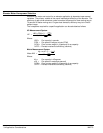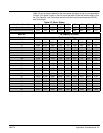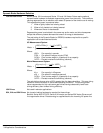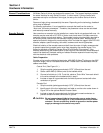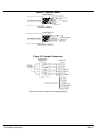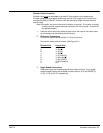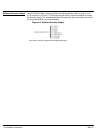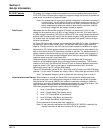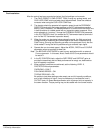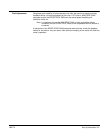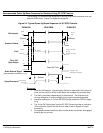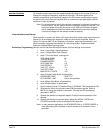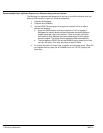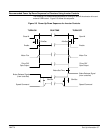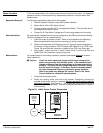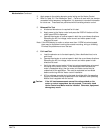
Section 1
General Information
5-2 Set-Up Information MN770
Final Installation
After the control has been mounted and wired, the final settings can be made.
1. The CALC PRESETS, CMD OFFSET TRIM (if using any analog mode), and
CUR LOOP COMP auto tune tests should be performed. Close the armature
contactor when doing the CUR LOOP COMP test.
2. The elevator should be operated at inspection speed to set the FEEDBACK
DIRECTION and verify the jumper settings on the DC tachometer expansion
board (if one is installed). The feedback direction is correct when the motor runs
in both directions at a stable speed with an inspection speed command. If the
motor attempts to “run away”, change the FEEDBACK DIRECTION parameter
in the DC CONTROL block (or reverse the DC Tachometer leads at terminals 1
and 4 of the DC Tachometer expansion board).
3. When the motor can be rotated using automatic control, the field current and
voltage should be measured and verified against the motor nameplate rating.
Field Forcing, Running and Standing currents can be produced in only the two
Hoist modes. Forcing the field is possible using an external input signal.
4. Operate the car at contract speed. Adjust the ACCEL, DECEL and S-CURVE
parameter values as required for best ride.
Note: The BIPOLAR HOIST MODE is used in many applications with an external
S-curve generator. In this case, Accel, Decel and S-Curve parameters should
be set to 0.
5. In the DC CONTROL block, adjust the RA
TE PROP and RA
TE INT gains to
provide the smoothest ride and best performance for empty car, balanced car
and full capacity conditions.
6. When optimum conditions are achieved, set the following LEVEL 2,
PROTECTION block parameters:
OVERLOAD = FAULT
FOLLOWING ERROR = ON
TORQUE PROVING = ON
Be certain to test these settings under empty car and full capacity conditions,
and in both directions of travel. It may be necessary to increase the Level 1
OUTPUT block, At Speed Band parameter value to prevent a trip at capacity in
the down direction. Torque proving may not be usable with low current motors.



